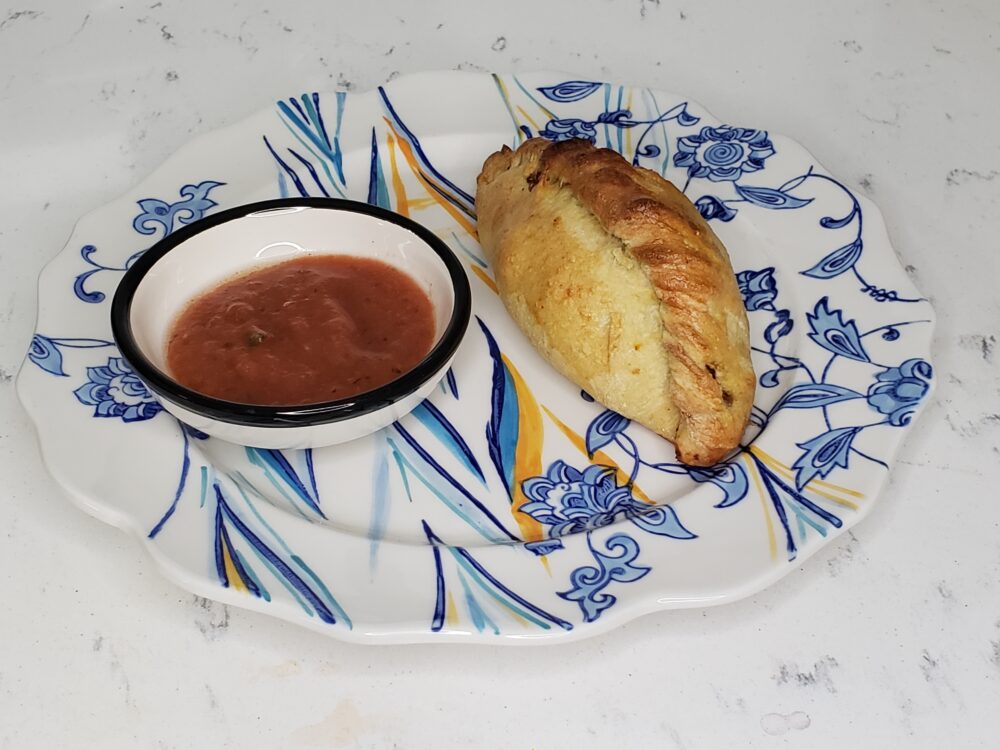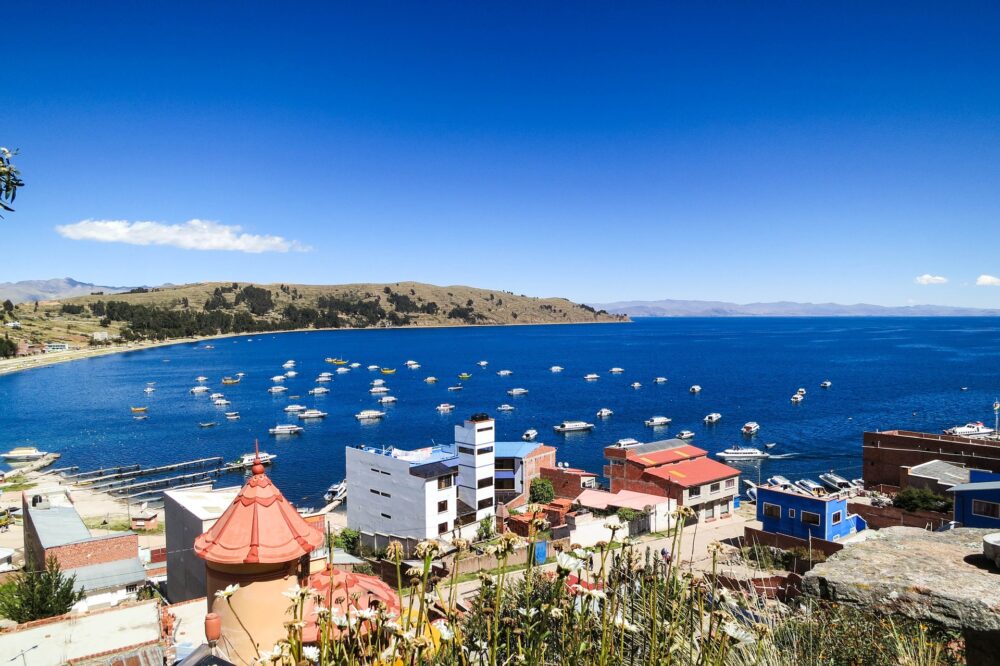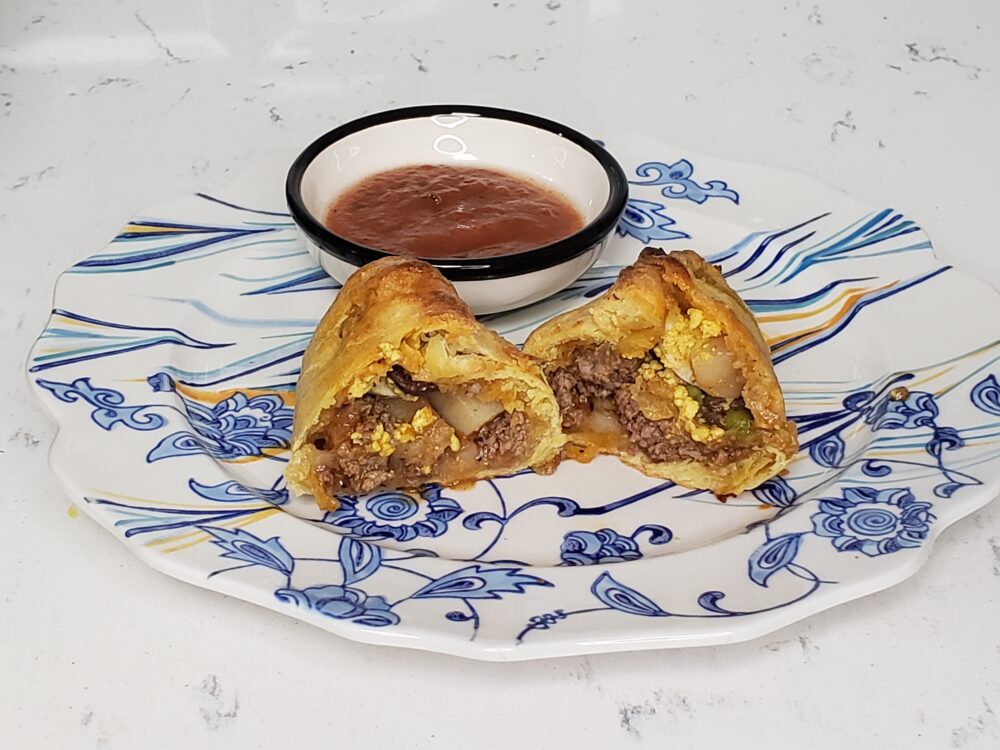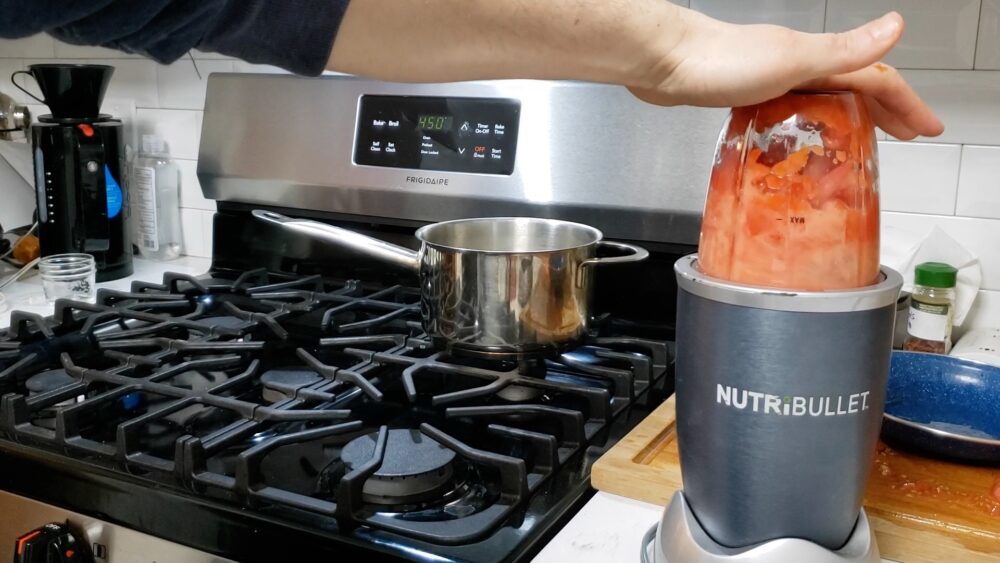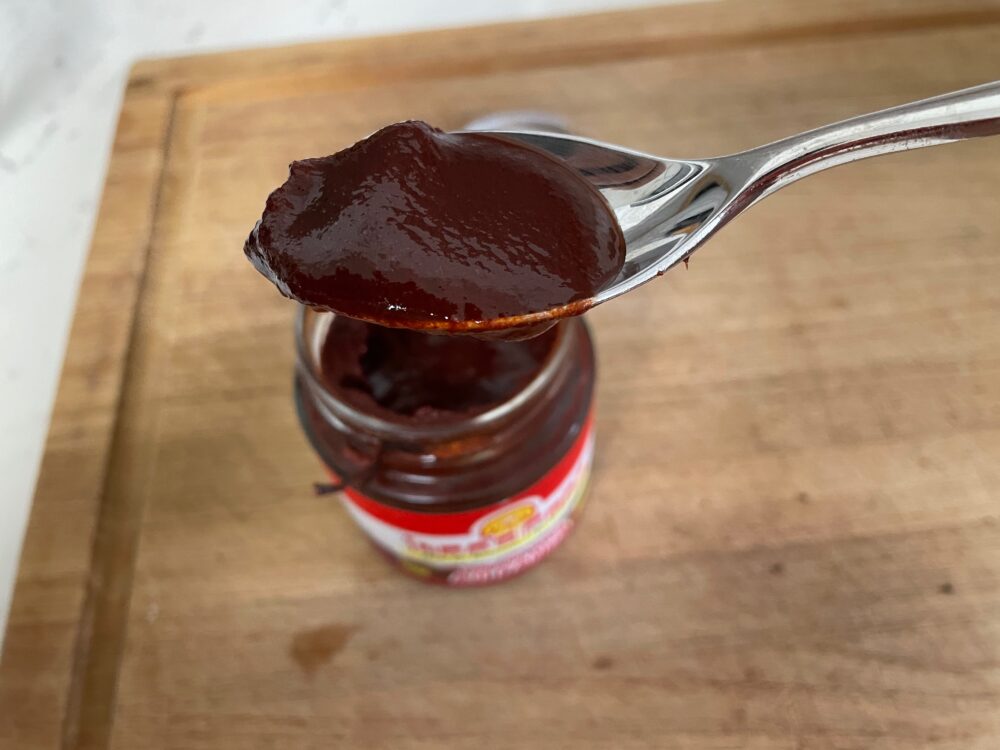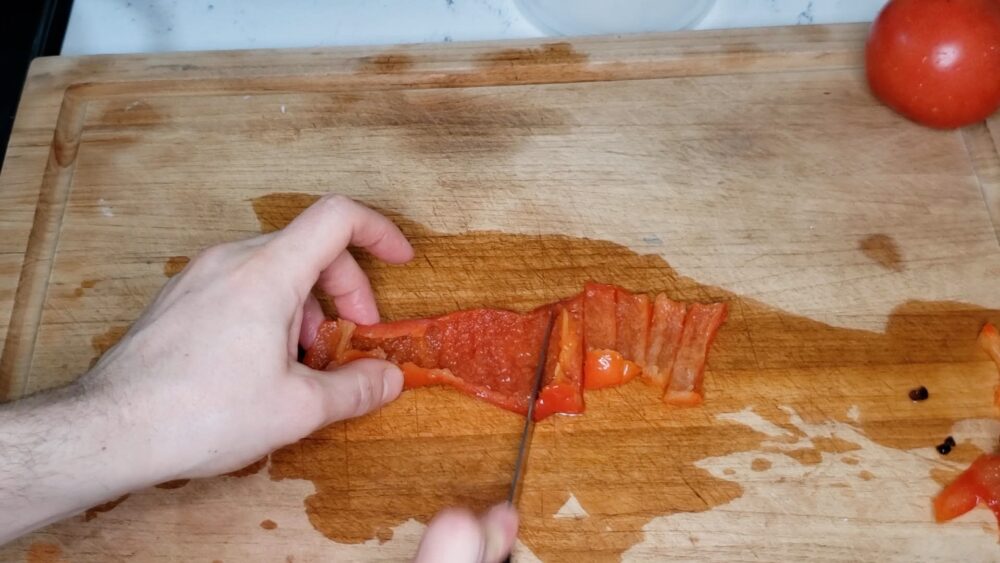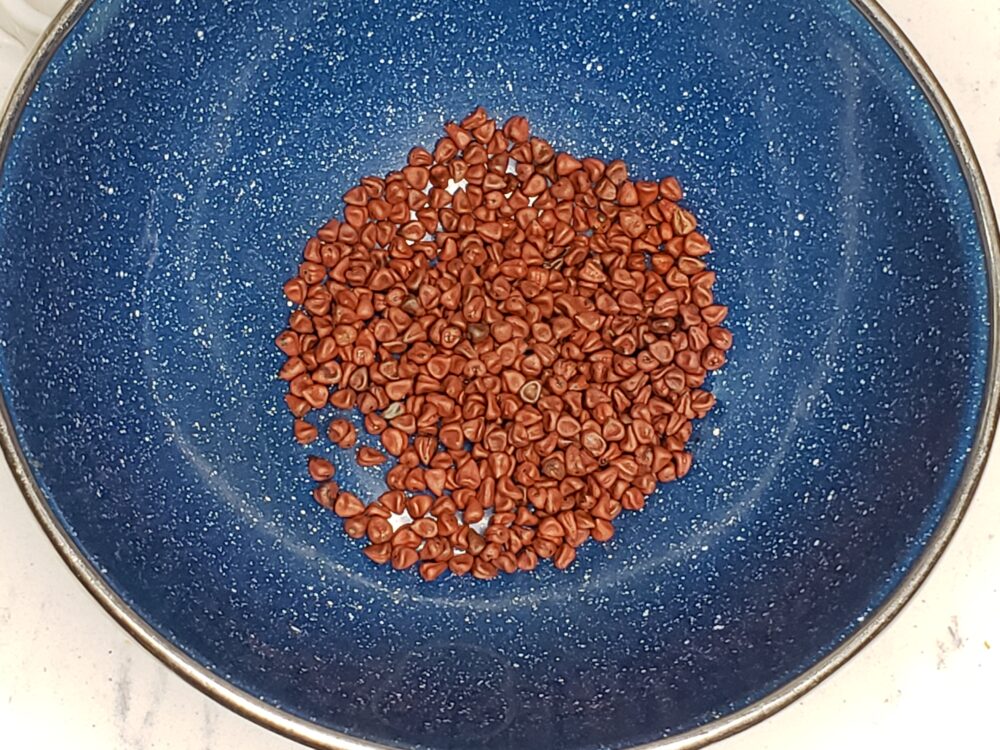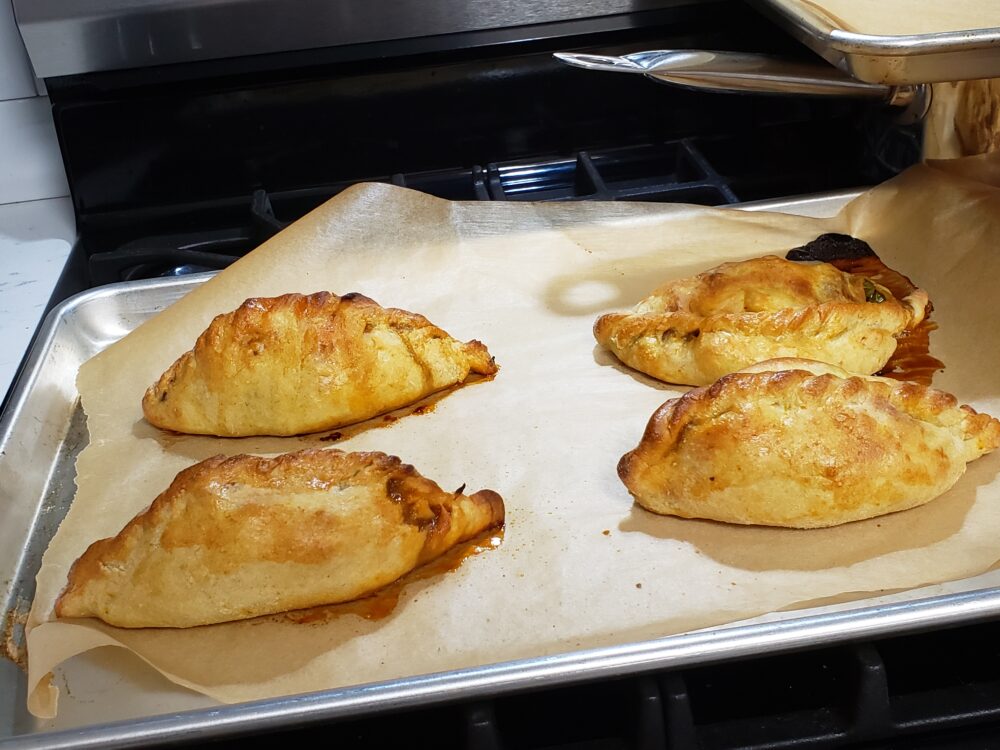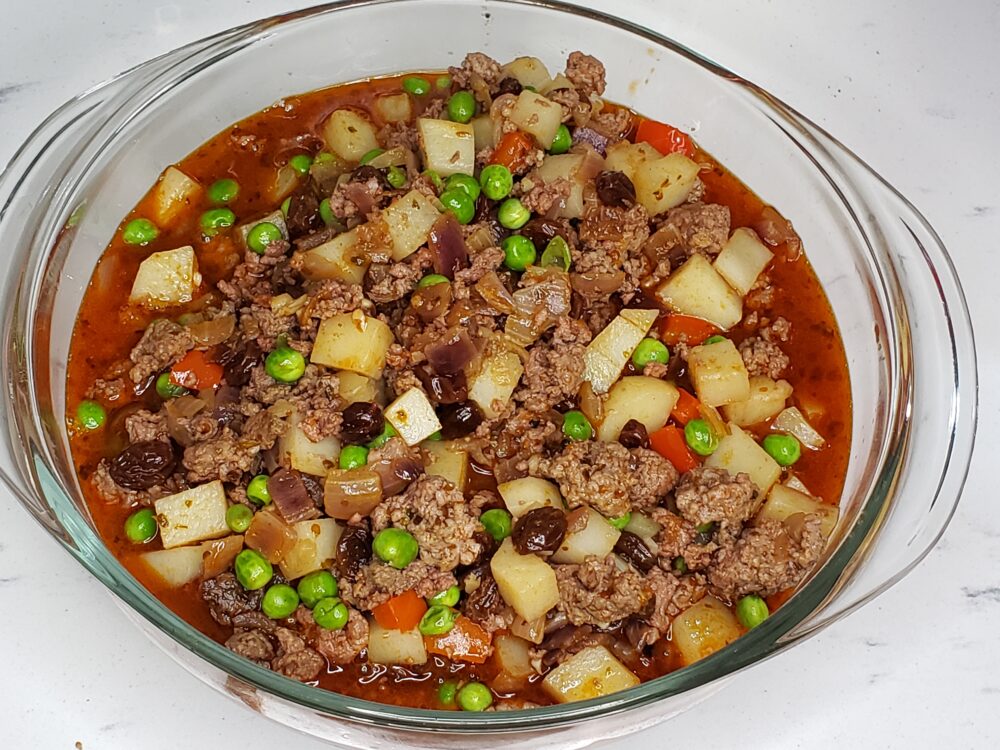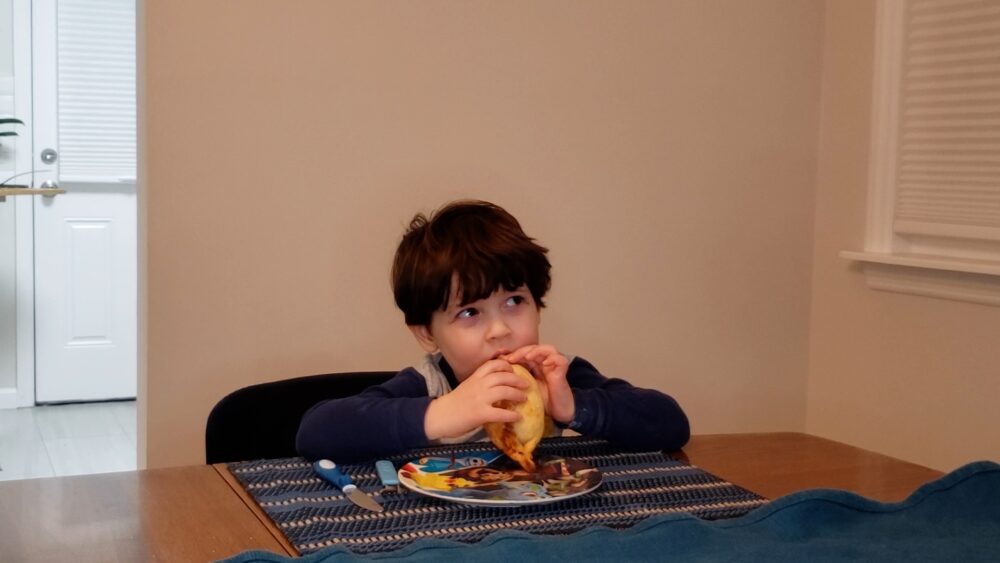I’m so excited about Bolivia. Not just because I think Sam will really love the food, but it’s a cuisine that is sadly under-represented in this country and really deserves more attention. Its neighbors in Peru and Brazil get lots of food praise, but Bolivian food is just as worthy.
And all you need to do is bite into a traditional salteña to understand.
THE CUISINE
Just like last week in Bhutan, much of Bolivia is high up in the mountains. This time it’s the Andes, of course. Similar to Bhutan, the food of the highlands of Bolivia tends to be spicy and mostly of carbs. But instead of red rice, here you’ll find potatoes, corn, quinoa, and wheat.
But other parts of Bolivia are very different from the regions in the Andes. There are also lowlands and jungles (the Amazon!!) which both have different products and cuisine.
One thing Bolivia does not have is a coastline. Bolivia is landlocked between Peru, Brazil, Argentina, and Paraguay. Lake Titicaca might provide some fish to the nearby regions, but most of the diet in Bolivia is made up of hearty meats, grains, and fruits.
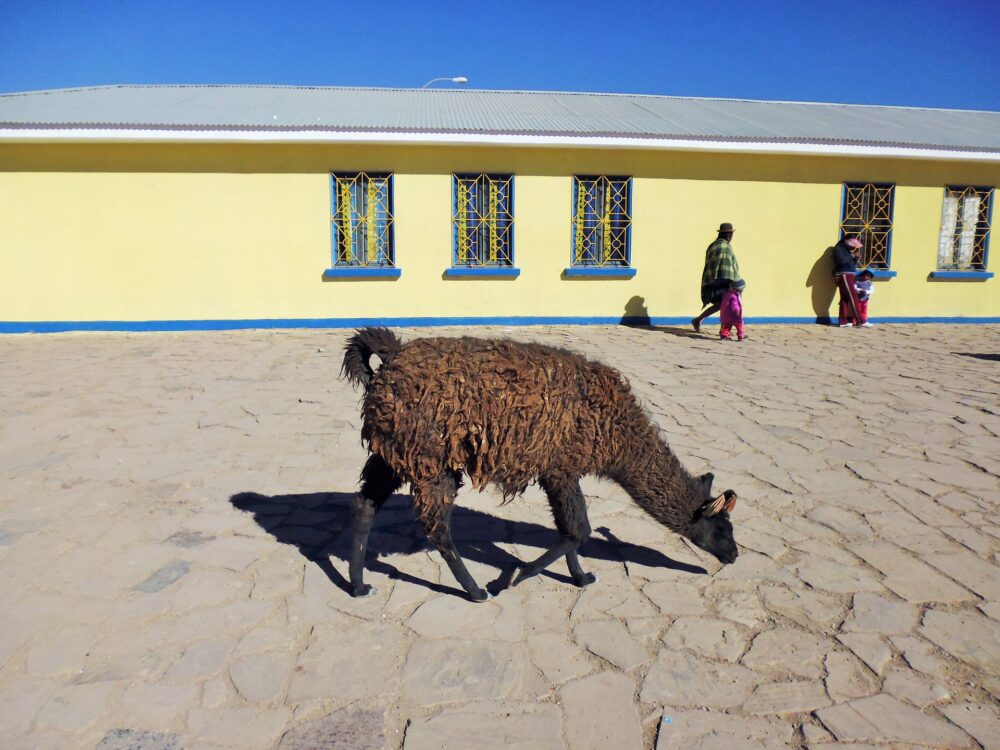
One of the most well known dishes in the valleys is Pique Macho, a sampler plate of sorts with meat, chorizo, peppers, eggs, tomatoes, and sauce. There are plenty of pork sandwiches, skewers of cow hearts, and silpancho (a thin piece of pounded and fried beef or llama).
Like its neighbor Peru, the cuisine of Bolivia has been much influenced by the Incans, but also the Aymara people and Europeans (namely the Spanish and Italians).
Unlike Peru, the cuisine of Bolivia unfortunately has not reached a wider audience. Let’s hope that changes soon. Maybe this blog post will be the one that puts Bolivian cuisine over the edge and into the spotlight. One can hope.
BOLIVIAN FOOD IN NEW YORK
The best place to try Bolivian food in New York might also be the restaurant with the best name in the entire city. It’s called Bolivian Llama Party.
When they opened at Smorgasburg back in 2014, I had the great honor of tasting their food and making a short promotional video with them for the Vendy Awards.
Since then, they have had lots of acclaim in the city at their now closed location inside the Columbus Circle subway station.
Before the Oropeza brothers opened Bolivian Llama Party, the only other place I was aware of for Bolivian food was a place in Sunnyside, Queens called Mi Bolivia. Unfortunately they closed, but the good news is Bolivian Llama Party now operates in the same storefront.
The first time (and only time before now) I tried salteñas was at their locations and they were hefty, hearty, and delicious. Salteñas are their specialty, but they also sell other Bolivian specialties like Silpancho, sandwiches called cholas, and lots more.
THE VIDEO
Sam get his hands dirty in the sticky dough and exclaims “This is a fun video!!” It always helps when we make a mess.
I couldn’t ask for a better helper than Sam. We both put on our baker hats and work together to make these traditional Bolivian salteñas. Sam is pretty confident in his skills and proud of himself when we finally get dinner on the table.
He also had his first taste of a hard-boiled egg (one of the traditional fillings) and liked half of it.
THE DISH
SPECIAL INGREDIENTS
Thanks to my familiarity and experience with Peruvian food, I had actually encountered all of the special ingredients we needed for this recipe. I also knew there were some Latin American grocery stores nearby so I could assemble them all.
Aji Panca
So this fruity smokey condiment is made from the aji panca pepper is more typical in neighboring Peru. It has just a hint of heat but certainly not overbearing with stronger fruit and earthy notes. Sam thought it smelled like potatoes, which was an interesting statement considering potatoes are also native from this region.
Huacatay (Black Mint Paste)
This is another mostly Peruvian ingredient that is often used in Bolivian llajua. Since we couldn’t find quilquiña, which is also known as Bolivian coriander, we thought this (along with some cilantro) would be a good substitute.
The paste is made from huacatay, a plant related to marigolds. The word mint makes you think it will taste minty, but it’s more herbal and vegetal with maybe a touch of fresh mint. It added a nice dimension to the sauce, but I wouldn’t recommend brushing your teeth with it.
Rocoto (or Locoto) Pepper
We were able to find this Bolivian pepper in the frozen section of our local Latin American grocery store. I don’t think you will have luck finding it fresh in this country. But the good news (to bad news, depending on your stance) is that freezing peppers does not diminish their heat.
And this bright orange pepper has a lot of heat. They can reach up to 100,000 on the Scoville scale (that’s similar to a habañero or about 20 times spicier than a jalapeño). This is integral in Bolivian cuisine and I’m so glad we were able to add it into the llajua – which Sam did not try, of course.
Annatto Seed
This is not the first time we used annatto seed on this journey. It was actually just a few weeks ago when we made hearty stew chicken from Belize that we got some use of our annatto seed stash. And in case we forgot, the vibrant red seed left a stain on our cutting board.
Annatto is a bright red seed that comes from the fruit of the achiote tree. It’s used in Latin American, Caribbean, and some Asian cuisines. The seed itself is bright red and very hard. It needs to be put into a grinder or blender to really be broken down. Or you can buy it in powder form. It also has a habit of dying everything an orange-red hue.
Salteñas with Llajua from Bolivia

A very popular late morning/early afternoon snack in Bolivia is this street food that is related to an empanada, but has a sweeter baked dough and a soupy meaty filling.
Salteñas
Meat Filling
- 1 pound ground beef
- 1 potato (diced)
- 2 cups beef broth
- 2 tbspn canola oil
- 1 red onion (diced)
- 2 garlic cloves (minced)
- 1 red pepper (diced)
- 1 tspn aji panca
- 1/2 tspn paprika
- 1 tspn cumin
- 1 tbspn oregano (dried)
- 1/4 tspn black pepper
- 1/2 cup raisins
- 1/2 cup peas
- 1/4 cup sugar
- 1 pack gelatin
More Fillings
- 1 large egg (hardboiled)
- 8 black olives
Dough
- 1/2 cup butter
- 1 tspn annatto seeds
- 1/2 pound AP flour
- 1 tspn kosher salt
- 3 tbspn sugar
- egg whites (for brushing)
Llajua (Salsa)
- 1 rocoto pepper (seeded and chopped)
- 3 tomatoes (seeded and chopped)
- 1/2 tspn huacatay paste (black mint)
- 1.5 tspn salt
- 1 sprig cilantro (chopped)
Meat Filling (Make This The Night Before)
-
Boil broth in large pot. Add potatoes and cook until tender, about 10 minutes. Remove potatoes and set aside. Reserve broth.
-
Season ground meat with salt and pepper.
-
Heat oil in large skillet. Brown meat on all sides. Remove with slotted spoon and set aside.
-
Remove some fat from skillet, but reserve at least 2 tpsns. Turn heat to medium and cook onions until caramelized, about 7-10 minutes.
-
Add garlic and cook for another 5 minutes. Add red peppers and cook for another few minutes.
-
When softened, add aji panca, paprika, cumin. oregano, and black pepper. Cook until fragrant and well mixed. About 2 minutes.
-
Add meat, potatoes, and raisins to skillet. Cook and stir for about 3 minutes.
-
Add broth (add more if necessary) and season with salt and pepper. Simmer for about 30 minutes.
-
Add in peas and sugar. Stir well and cook for a few minutes until sugar dissolves.
-
Mix gelatin into 1/2 cup of water, stirring so it dissolves. Add gelatin mix to skillet and stir well.
-
Chill overnight.
Dough
-
Grind annatto seed into a powder.
-
Melt 1/2 cup of butter and add annatto. Heat gently for a few minutes and stir so that the butter becomes red and infused with the annatto. Strain and reserve the red melted butter.
-
In a mixing bowl, whisk together 1/2 pound (about 2 cups) of flour, kosher salt, and sugar.
-
Pour melted butter into flour mixture. Using your hands, mix until thorough combined.
-
Add 1/3 cup of hot water and mix until dough comes together into a smooth ball.
-
Divide dough into 4 equal portions. Fold each portion of dough onto itself until it becomes smooth and then pat each into a disk. Cover each one with plastic wrap and chill for about 20 minutes,
Assemble
-
On a floured surface, roll out each portion to about an 8 inch round.
-
Add about a cup of meat filling to the center. Top with a quarter of a hard boiled egg and two black olives cut in half.
-
Press top together into a large football shape with a seam running across.
-
Crimp edges to make a braid by pinching and twisting all the way across the seam.
Bake
-
Preheat oven to 450 F.
-
Place sealed salteñas on baking sheet lined with parchment paper. Brush each one with egg whites.
-
Bake until browned for about 15-20 minutes.
-
Serve with llajua.
Llajua (Bolivian Salsa)
-
Add chopped and seeded rocoto pepper into a food processor or blender with 1.5 tspn salt. Blend.
-
Add chopped seeded tomatoes. Blend again until smooth.
-
Add huacatay paste and blend some more. Add cilantro sprigs and give one more blend.
HOW I SCREWED IT UP
First off, let’s pat ourselves on the back. We created thick salteñas that looked exactly like they should. They were doughy, browned, slightly red, and had that distinct braid which was more attractive than I expected from our hands. Sam and I have some serious crimping skills. Who knew?
We also managed to wrap and bake them without the filling exploding. They came out of the oven intact which was another feat.
Where we went wrong was the inside filling consistency. They were supposed to leak out a beef stew or soup when cut into. They didn’t really do that. They looked nice and had a good flavor, but the texture was a bit dry and not as explosive as I was hoping.
Why did that happen? Not sure.
We did something right because the following day we warmed up some of the filling to eat outside of the salteña and that turned into a liquid-like stew. I just didn’t manage to create that texture inside the dough.
My guess is we either didn’t mix the gelatin in well enough to the initial filling or we didn’t scoop deep enough down into the meat mixture for the dough. Or most likely both.
Someone from Bolivia commented on the video and suggested we should have pre-baked the dough and that would have helped with the filling consistency. Might try that next time.
We essentially made a beef empanada with a sweet dough. Nothing wrong with that.
The llajua was good, but a bit watery. It had a good deal of spice and flavor and balanced the sweet salteñas nicely. I wish I had added a little more cilantro or huacatay to give it a bit more complexity.
SAM’S REACTION
My son is a carb fiend. This happened back in Australia when we made meat pies, which is a similar concept to salteñas.
He happily tried it but stopped short at the filling. He loved the exterior bread but had no interest in the meaty filling. And this kid likes meat. What a weirdo.
Even though he only ate the dough, he had a great time making them and really loved the creation we created. He just didn’t want to look inside.
NEXT TIME
Before the pandemic, young Sam had the great fortune to travel a bit. And the first country on this cooking journey that he’s been to in real life is coming up next when we cook the cuisine of Bosnia and Herzegovina….

